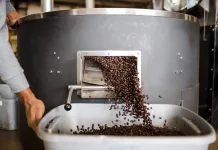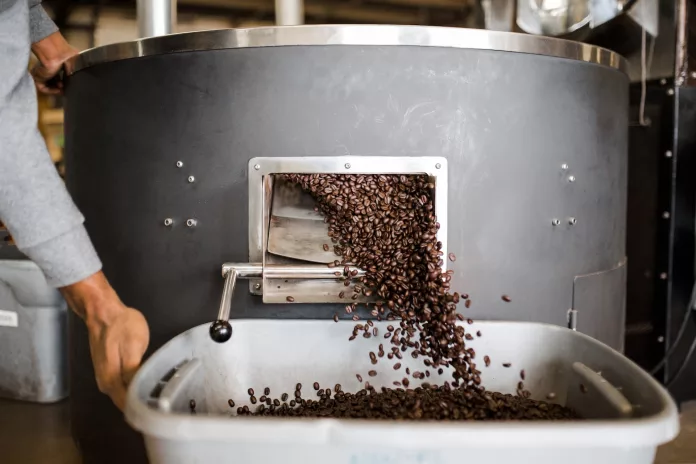Sustainable packaging solutions are gaining momentum, reflecting a commitment to environmental responsibility, while precision agriculture and data analytics are optimizing every facet of the production cycle. The emergence of 3D printing in food manufacturing further underscores the industry’s adaptability and creativity. Join us as we delve into the fascinating landscape of these five innovations that not only enhance productivity but also contribute to the overall quality, safety, and sustainability of the industrial food processing sector.
1. Automation in Production Lines
The evolution of industrial food processing has been profoundly reshaped by the incorporation of advanced automation in production lines. Utilizing state-of-the-art technologies, this transformation significantly elevates operational efficiency. Throughout diverse stages of the production process, from handling raw materials to packaging, sophisticated food processing equipment assumes a pivotal role. Robotics and AI-driven systems meticulously carry out tasks like sorting, slicing, and packaging, optimizing precision while reducing reliance on manual labor. Investing in high-quality industrial food processing equipment can be a breakthrough, as they encompass a spectrum of machinery and automated systems, collectively contributing to the seamless and efficient functioning of contemporary food processing facilities. This integration of various industrial processing equipment not only expedites production but also ensures unwavering adherence to consistent quality standards.
2. Advanced Thermal Processing Techniques
Advanced Thermal Processing Techniques have ushered in a new era in industrial food processing, optimizing the preservation of flavors and nutritional content. Cutting-edge methods, such as high-pressure processing and microwave technology, ensure rapid and uniform heat distribution throughout the production process. These innovations not only expedite the manufacturing timeline but also contribute to the overall quality and safety of food products. By leveraging these thermal processing advancements, the industry can achieve heightened efficiency and consistency in the treatment of various food items. The integration of such techniques reflects a commitment to meeting stringent safety and quality standards within the industrial food processing sector, ultimately benefiting both producers and consumers alike.
3. Sustainable Packaging Solutions
The paradigm shift toward sustainable packaging solutions is a notable transformation in the industrial food processing sector. It is now crucial to embrace environmentally friendly products like compostable packaging and biodegradable plastics. This change is in line with the industry’s resolve to lessen its impact on the environment and solve the widespread issue of plastic pollution. The adoption of sustainable packaging not only meets consumer expectations for environmentally conscious practices but also contributes to the broader corporate responsibility initiatives undertaken by food processing companies. This trend signifies a positive stride towards creating a more environmentally sustainable and responsible food production ecosystem.
4. Precision Agriculture and Data Analytics
Precision Agriculture and Data Analytics are instrumental in reshaping the dynamics of industrial food processing. The integration of sensors and data-driven insights facilitates real-time monitoring of crop conditions, resource utilization, and supply chain logistics. This data-centric approach empowers decision-makers in the food production cycle to make informed choices, leading to more efficient resource management and improved crop yields. Precision agriculture techniques enable a targeted and optimized use of fertilizers, water, and other resources, contributing to sustainable agricultural practices. The synergy between precision agriculture and data analytics not only enhances the productivity of food production but also supports the industry’s efforts to address challenges related to climate change and resource scarcity.
5. 3D Printing in Food Manufacturing
The advent of 3D Printing in Food Manufacturing represents a pioneering development in the industrial food processing landscape. With unmatched precision, complex food structures may be created thanks to this cutting-edge technology. Food items are crafted layer by layer, enabling customization that caters to individual preferences and nutritional needs. Beyond personalization, 3D printing offers efficient solutions for producing complex shapes and textures in various food products. This technology not only transforms the aesthetics of food but also streamlines the manufacturing process by introducing flexibility in design and production. The integration of 3D printing in food manufacturing is indicative of the industry’s continuous pursuit of novel approaches to meet evolving consumer demands and enhance the overall production experience.
Conclusion
From streamlined automation to precision agriculture and sustainable packaging solutions, these advancements not only enhance productivity but also underscore the industry’s commitment to quality and sustainability. Advanced thermal processing techniques ensure the preservation of flavors and nutrients, while the introduction of 3D printing in food manufacturing pushes the boundaries of customization.














![[Viral Video] Wpcnt.com 2023: A Dive into Jannat Toha’s Viral Video Details](https://www.businesszillablog.com/wp-content/uploads/2023/10/viral-video-150x150.png)
![[UNCUT] Bashid Mclean Original Photo No Blur: Tania Head’s Unblurred Image Sparks Discussion Bahsid McLean la Photo Sin Miedo Al Ban](https://www.businesszillablog.com/wp-content/uploads/2023/09/image-4-786x420-min-150x150.png)

